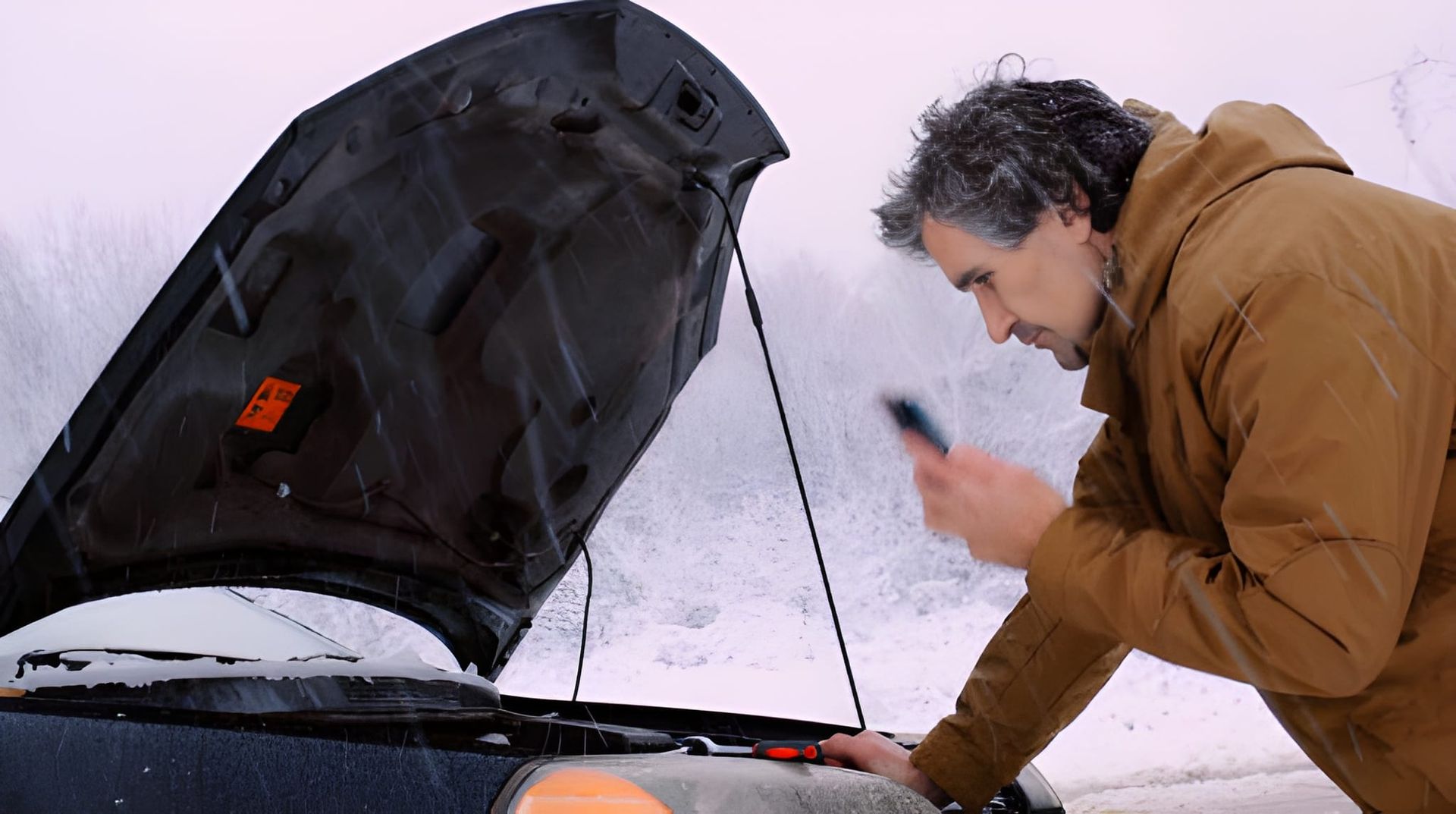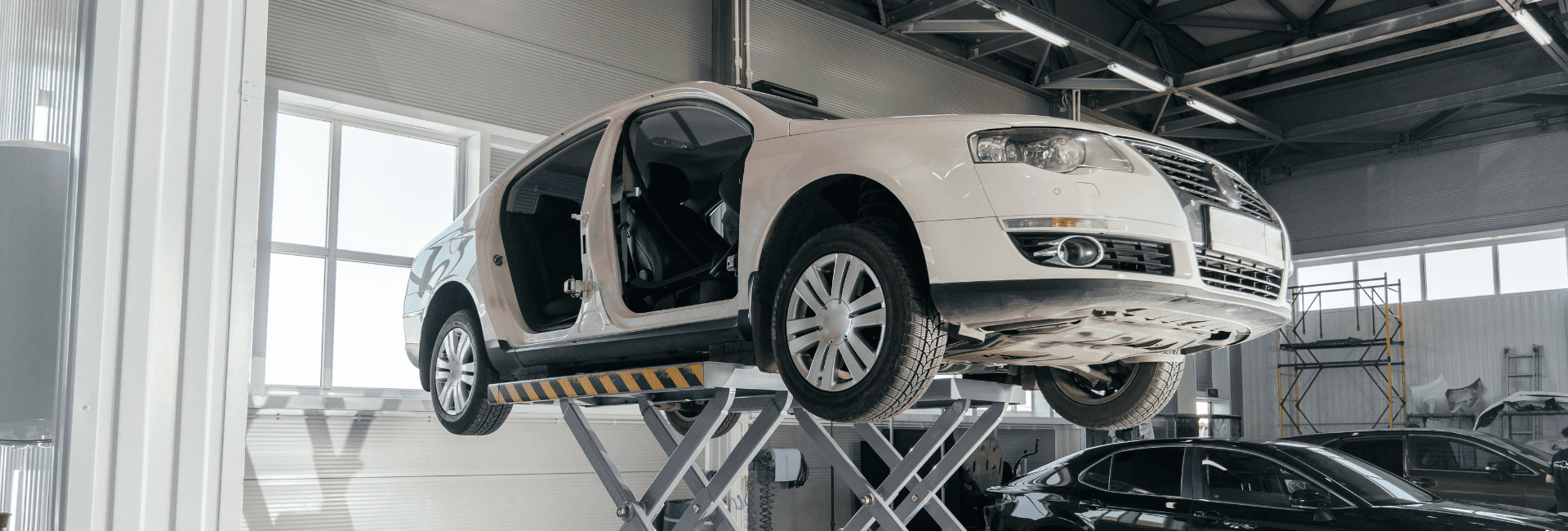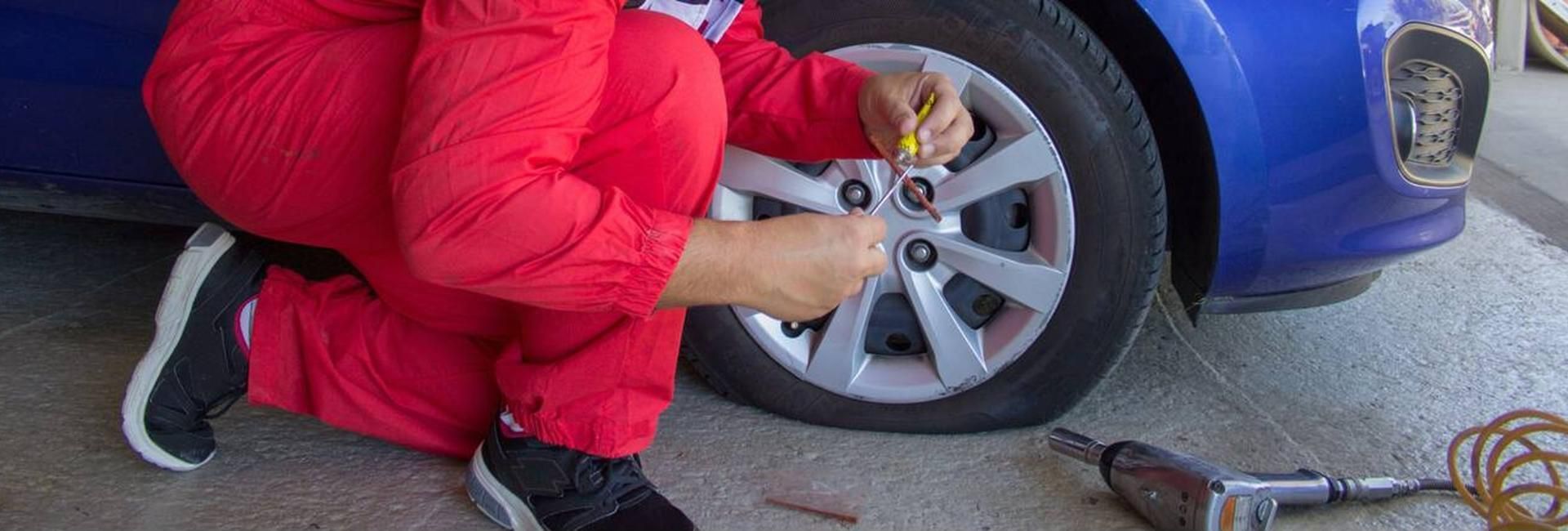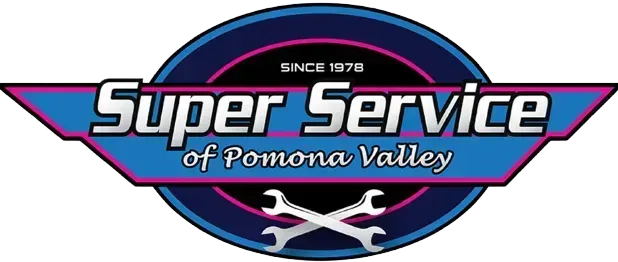Why It's Important To Get An Oil Change On A Toyota Camry Every 5,000 Miles
January 16, 2023
When Does My Toyota Need An Oil Change?
Introduction
If you're like most people, you've got a lot going on in your life. You probably don't have time to do all of the research required to figure out when and how often your car needs oil changes, but that doesn't mean it's not important! In this post we'll break down how often your vehicle should get its oil changed, what kind of oil you should use for optimal performance, and why regular maintenance is so important for keeping your car running smoothly for years to come.Oil changes are recommended every 5,000 miles.
Oil changes are recommended every 5,000 miles. That’s about twice a year, but you can always check your owner’s manual for specific details. Oil changes are good for the engine and the car because they help keep it running smoothly and prevent certain problems from occurring. If you skip an oil change or don’t get one done often enough, old engine oil breaks down over time and can cause issues like sludge build-up or even catastrophic failure of your vehicle's internal parts. Oil changes help you avoid engine problems by keeping them clean and well lubricated—they also lubricate moving parts like pistons so they run freely without grinding against each other too much (or at all). Sludge forms when contaminants get into old viscosity levels; this makes it harder for these objects inside an engine to move properly through narrow passages found in many vehicles today--especially those made before 1991!Do not skip an oil change.
Oil is the lifeblood of your engine. It lubricates, cools, and cleans as it circulates. If you don't change it regularly, your engine will die. In fact, changing the oil regularly is one of the best ways to extend the life of your car—and it's a lot cheaper than replacing an entire engine! In addition to extending the lifespan of your car's engine (and thus saving you money), regular oil changes also help ensure safety: dirty or low-quality oil can cause excessive wear on internal parts which can lead to breakdowns or malfunctions.Have a mechanic replace your air and cabin filters at least every 15,000 miles.
If you feel like you’re spending more money on car maintenance than ever, it might be time to start paying attention to those little items that wear out faster than the big ones. There are two filters that can wear out or get dirty so frequently that they need replacing once every 15,000 miles: the air filter and cabin filter. Air filters are designed to keep dust, pollen and other particles from entering your vehicle's engine intake manifold as your car sucks in air through its vents. Cabin filters remove dust and other particulates from the air that circulates throughout your vehicle's interior—and if it isn't replaced regularly, these particles will end up sticking to everything inside your ride and making it look like something straight out of a post-apocalyptic movie set in a barnyard instead of a modern luxury automobile with leather seats and climate control features galore!Check your service records and other records from the previous owner to see when and how often the vehicle was serviced in the past.
A great way to find out when your Toyota needs an oil change is by checking the service records and other records from the previous owner. If you can't find any documentation of regular oil changes, it's important to ask them why they didn't take their vehicle in for this maintenance or if they had an oil change at all. If you do find evidence that someone had regular maintenance performed on the car, this could mean that less frequent oil changes are needed.Don't skip service inspections and don't wait for problems with your car to get worse to schedule an oil change.
When it comes to your car, you should never risk skipping service inspections or waiting for problems to get worse before scheduling an oil change. Oil changes are important for your car's health, and they should be a regular part of any routine maintenance check-up. Your car will send you plenty of warning signs that it needs an oil change—a burned out light bulb means something's wrong with the engine; a funny smell means something is burning; poor gas mileage can indicate that your engine is dirty and needs more power to run efficiently (and cleanly). So whether you're driving around town or taking a trip across country, don't risk it by neglecting an important task like changing the oil in your vehicle! If anything does go awry with your car after an extended period without servicing it properly, there may not be much we can do for fixing those problems now since so much damage has already been done. But there are still many benefits associated with having proper maintenance done consistently at least once every three months:- You'll save time because repairing broken parts will cost less than having them replaced entirely later on down the line when they've already been damaged beyond repair due to neglecting regular maintenance procedures such as changing fluids regularly throughout each year's span instead of just once when needed annually instead.*
A car's oil change should be done every 3000-5000 miles depending on the oil used and the consumption of oil by the engine
The simple answer is that every 3000-5000 miles you should change the oil in your car. There are a few factors that will determine how often an oil change is needed, such as the type of oil you use and the engine itself. If you drive a lot, then your car uses more oil than someone who doesn't drive much. This means that if you drive more than 10,000 miles per year (roughly 1550 miles per month), then it's better for your engine to have frequent changes of its fluids including oil and transmission fluid (if applicable). If this isn't feasible for whatever reason (cost or time), then I recommend doing it at least once per year so that everything stays healthy and running smoothly. The other factor that comes into play when deciding how often to change your car's oil is what type of driving conditions exist where you live. For example: if there are lots of hills or stop-and-go traffic jams where I live (Los Angeles), then my vehicle loses more power due to heat build up caused by constant idling while sitting still on steep inclines; thus it's important for me do regular maintenance like changing fluids frequently throughout my life here because those two things together cause wear & tear on all components under stress like any other part inside my engine."The main reason your vehicle needs a new oil pan is because of a leak in the rubber gasket. These leaks are sometimes undetectable by the owner of the car because there are covers protecting the underbelly of the vehicle which collect the oil. Leaks that go on for too long cause catastrophic engine failure, so get your oil changes done at least once a year with a digital inspection
- The main reason your vehicle needs a new oil pan is because of a leak in the rubber gasket. These leaks are sometimes undetectable by the owner of the car because there are covers protecting the underbelly of the vehicle which collect the oil. Leaks that go on for too long cause catastrophic engine failure, so get your oil changes done at least once a year with a digital inspection
- Another reason you need to replace your oil pan is if it has been damaged by other vehicles or objects. If a rock got hit and fell into your engine during an accident, it could have chipped away at one of its components, including your oil pan.
The dipstick in your engine is a helpful tool to see how much oil your engine is consuming. It's a good idea to check the dipstick regularly.
When you check your oil level, you'll use a dipstick. It's important to know what the markings on your car's dipstick mean and how to read them. The first thing to do is check the level of oil in your engine. To do so, remove the oil filler cap and insert the dipstick all the way into its tube until it touches bottom, then pull it out slowly while keeping an eye on where on its length oil has collected along with water if present before wiping off any excess with a rag or paper towel before reinserting into tube fully again The amount of wetness that appears on this gauge will tell you two things: how much oil is left in your car and whether there are any leaks that need attention immediately! If there is no liquid coming up at all after passing through any cracks around seals or gaskets/bolts then chances are good everything else is fine but if some fluid comes out when checking levels then you should go ahead head over to local mechanic shop because something definitely needs fixed ASAPAutomobile maintenance can be scary, but it doesn't have to be!
Automobile maintenance can be scary, but it doesn't have to be! If you're not sure when your car needs an oil change, there are some simple things you can do at home. The first is checking your oil level regularly. If the sticker on your dashboard or in your owner's manual states that you need to change the oil every 5,000 miles or 6 months (whichever is shorter), then check it every time you fill up the tank with gas. If it seems like there's less than a quarter inch of oil at the bottom of the dipstick tube while driving around town, chances are good that it needs changing soon; if there's more than half an inch left after driving long distances at high speeds on freeways and highways for several hours over two days without stopping for fuel or food breaks then chances are good that changing isn't necessary just yet. If this method isn't working for you though—maybe because you're always forgetting about doing so—you might want to invest in an inexpensive tool called an "oil indicator." This device uses UV light from LEDs mounted inside its casing which shines through transparent plastic tubing connected between two sections separated by a porous filter allowing only small amounts of fluid through at any given time; when those fluids come into contact with dye molecules embedded within them they fluoresce brightly!Conclusion
With these tips, you can feel confident in knowing when it's time to get your car checked. Even if you don't have the tools or knowledge to do some of these inspections yourself (like checking the oil level), you can always take your vehicle into a mechanic or dealership and have them do it for you. With all of this information at hand, even if something goes wrong with your car, we're sure that there is no need to panic!
In Pomona Valley, we don’t deal with blizzards or black ice like drivers in the Midwest or Northeast, but that doesn’t mean winter driving is without its challenges. Here, winter is more subtle—cooler mornings, wetter roads, shorter days—but those small shifts can still catch drivers off guard if their vehicle isn’t properly prepared. At Super Service of Pomona Valley, we often see winter-related wear-and-tear that drivers don't expect, simply because it doesn’t “look” like winter outside. This blog breaks down how winter driving in our area compares to other seasons, the hidden impact it can have on your vehicle, and why giving your car a seasonal check-up is just as important in Pomona as anywhere else What winter looks like in Pomona Valley Winter in Pomona Valley typically brings: Cooler morning temperatures, especially in the early hours Increased rain and slick road conditions Shorter daylight hours, affecting visibility and driver fatigue More stop-and-go traffic due to holiday shopping and travel That might sound mild, but even these modest changes affect how your car performs—and how quickly certain systems wear down. Comparing the seasons: what’s different in winter? Spring: After the rainy season, spring is often dry and mild. It’s a good time for tire inspections (potholes and water can wreak havoc on alignment) and checking for early battery issues. But generally, spring puts less strain on your vehicle unless you’re dealing with neglected winter damage. Summer: Summer brings heat, road trips, and long days. High temps test your cooling system, AC performance, tires, and fluids. Extended drives during vacation months often lead to oil breakdown and higher wear on brakes and belts. Fall: A transitional season where the weather’s cooler but not yet cold. It’s a prime time for maintenance: oil changes, tire rotations, and early inspections to prepare for winter. Winter (Pomona-style): Here’s where things change subtly but significantly. Cold starts can expose a weak battery or cause issues with old fluids. Rainy days bring out worn wipers, foggy windshields, and slippery road issues. Dark commutes highlight poor headlight performance, low tire tread, or brake response issues. Increased traffic around malls, airports, and family events leads to more idling and stop-and-go wear on brakes and engine systems. The biggest issues we see in winter 1:- Battery failures Cold mornings stress your battery’s ability to hold a charge. If your battery is more than three years old, it might be time to test or replace it. 2:- Worn tires Summer might not have shown how bad your tread was, but one wet winter morning will. Hydroplaning risk goes way up with worn tires. 3:- Ineffective wipers and washer systems Dry summers crack rubber blades. You don’t notice until your first rainy drive. That’s when it matters. 4:- Brake performance issues Cold, wet conditions magnify brake squeaks, vibration, or fading. If you haven’t had a brake check recently, now’s the time. 5:- Heater & defroster problems You may not have run your heater since March. If it’s not functioning right or your defroster isn’t clearing up the glass—you’ll feel it on chilly mornings. 6:- Underused HVAC filters People often keep windows closed in winter. That means your cabin air filter plays a bigger role in keeping air fresh and allergen-free. If it hasn’t been changed in a while, it could be affecting your comfort and health more than you think. What can you do right now? Book a Winter Readiness Inspection at Super Service of Pomona Valley. We’ll: Test your battery and charging system Inspect tires and tread depth Check brakes, pads, and rotors Examine belts, hoses, and all fluid levels Test wipers, lights, and washer systems Ensure heating and defrost systems are working properly Check cabin air filters and comfort systems We also offer Digital Vehicle Inspections (DVIs) with photo/video reports, so you can see exactly what’s going on with your vehicle, without any guesswork. Conclusion Winter in Pomona Valley may not come with snowstorms, but it still demands preparation. The changes in driving patterns, visibility, temperature, and traffic are enough to put stress on your vehicle in ways that spring and summer don’t. Taking the time to get a full winter inspection can prevent everything from battery failures to poor visibility on a rainy drive. At Super Service of Pomona Valley, we’re here to help you stay safe, save money, and drive confidently no matter the season. Let’s make sure your car is ready to take on the winter months with ease. Schedule your winter vehicle check-up today: 👉 Book your appointment here We look forward to keeping your car—and your holidays—running smoothly.
Discover expert tire services at Super Service of Pomona Valley, Pomona, CA. Enhance your vehicle's safety today! Schedule an online appointment now.

Introduction Seasons change, and with them come new challenges for your car. As the air turns crisper and roads may see more rain, now is the perfect time to give your vehicle the attention it deserves. A proactive check now can prevent surprises later breakdowns, costly repairs, or unsafe driving conditions. At Super Service of Pomona Valley , we’re committed to making your auto care experience smoother, more transparent, and more reliable. With our digital inspections, concierge services, and experienced technicians, we’re here to help you finish the year strong and head into the next season with confidence. In this article, we’ll walk through the key systems to inspect, the benefits of doing so, and how our team can help make it hassle-free. Why Seasonal Checks are Smart Right Now A lot changes between hot and cooler months: humidity, rain levels, daylight hours, road conditions, and temperature fluctuations. All of these can strain your car in different ways. Fluids respond differently in cooler weather: Engine oil, brake fluid, coolant, and transmission fluid may perform differently, and aging fluids are more vulnerable. Battery performance is sensitive to weather shifts: After enduring heat, your battery may be weaker than you think. Cooler weather can expose its weaknesses. Tires & grip matter more: Rain and colder pavement reduce traction, meaning proper tread, alignment, and tire pressure become critical. Lights & visibility become more vital: With shorter days and possible rain or fog, fully functional headlights, brake lights, wipers, and defrosters are essential for safety. Belts, hoses & rubber parts: Temperature swings can accelerate cracking, brittleness, or failure in hoses, belts, and seals if they’re already aged. Heating, defroster & HVAC systems: You want your defroster, heater, and ventilation to work well before the weather worsens; waiting until you need them is risky. Because these changes happen gradually, many drivers don't notice until something fails. Doing a seasonal inspection now means catching weak points while they’re still manageable. What We Inspect During a Seasonal Check At Super Service of Pomona Valley, our seasonal check covers all systems most affected by weather transitions: Battery & Charging System We test battery health, clean terminals, check connections, and ensure your charging system is working properly. Fluids & Coolant We check engine oil, coolant/antifreeze, brake fluid, transmission fluid, power steering fluid, and top or replace them as necessary. Tires & Alignment We’ll inspect tread depth, look for uneven wear, rotate if needed, and check wheel alignment to ensure stable handling. Brakes Pads, rotors, lines, fluid: everything is checked to make sure your braking system is reliable under challenging conditions. Lights, Wipers & Visibility Headlights, tail lights, turn signals, interior lights all tested. Wiper blades get inspected and replaced if needed. We also check wiper fluid levels and the defroster system. Belts, Hoses & Seals Any cracks, leaks, or brittleness in belts and hoses are flagged. Seals are examined for leaks or deterioration. HVAC / Heating / Defrost Ensure your heating and defrost functions work properly so you’re ready when you need to clear windows or warm up the cabin. Suspension & Steering Components Worn shocks, struts, bushings or steering parts are checked so your car stays stable and predictable. As part of our process, you’ll receive a digital inspection report with photos and videos. We want you to see exactly what our technicians see, no surprises, no pressure, only honest explanations. The Benefits of Acting Now Why not wait until something breaks? Here’s what you gain by being proactive Safety & peace of mind; You’ll drive knowing the car is assessed and ready for changing conditions. Cost savings: Addressing minor issues early is far cheaper than emergency repairs after failure. Better performance: With proper fluids, alignment, and functional systems, your car will run smoother, more efficiently, and reliably. Longevity: Your vehicle ages more gracefully when regular maintenance is done. No inconvenience: By planning, you’re less likely to be stranded or dealing with last-minute emergencies. Conclusion Don’t wait until the weather takes a toll on your car. A seasonal check now gives you confidence, safety, and reliability as conditions shift. At Super Service of Pomona Valley, we’re here to support you with top-tier care, transparency, and convenience. Let us help you prepare: before a small issue becomes a big problem. 📅 Ready to book your seasonal vehicle inspection? https://www.superserviceofpomonavalley.com/
Discover expert brake repair at Super Service of Pomona Valley in Pomona, CA. Ensure your safety with top-notch care. Schedule an online appointment now.
Expert transmission service in Pomona by Super Service of Pomona Valley. Enhance performance and reliability. Call us today!

Introduction: September marks the return to routine: school schedules, daily commutes, and weekend errands. But with more time spent on the road, you may also notice your gas tank draining faster. At a time when fuel prices can spike with little warning, every mile counts . Fortunately, improving your vehicle’s fuel efficiency isn’t complicated—it just takes a bit of proactive maintenance and some smart driving habits. That’s why Super Service of Pomona Valley is helping drivers reset their fuel efficiency this fall—with data-backed strategies that save both fuel and money. How Your Vehicle Slowly Loses MPG Over time, various parts of your car wear down, get dirty, or fall out of sync. While your engine may still "feel fine," small inefficiencies can reduce fuel economy by 10–20%, costing you hundreds each year. Here’s what typically drags down your MPG: Clogged Air Filters : Reduce oxygen to the engine, leading to poor combustion. Underin flated Tires : Increase rolling resistance, making your engine work harder. Worn Spark Plugs : Misfires or delayed ignition reduce fuel efficiency and power. Old Engine Oil : Causes more friction and strain on internal components. Dragging Brakes : A sticking caliper can constantly resist movement, wasting fuel. Poor Wheel Alignment : Misalignment means the vehicle fights against its own motion. How Much Can You Save? According to the U.S. Department of Energy : Fixing a serious maintenance issue (like a faulty oxygen sensor) can improve mileage by up to 40% Replacing a clogged air filter can improve fuel economy by up to 10% Proper tire inflation improves gas mileage by up to 3% Even small savings compound over time. Improving your fuel efficiency by just 2 MPG could save the average driver over $150 a year . Fall Fuel-Saving Checklist A simple fall tune-up can restore your engine’s performance and fuel economy. Here’s what we recommend: Replace Dirty Air Filters – Restore clean airflow for optimal combustion Check and Adjust Tire Pressure – Especially important during seasonal temperature drops Inspect Spark Plugs – Replace if fouled or past their service life Flush or Replace Engine Oil – Use the manufacturer-recommended viscosity Check Brake Performance – Ensure no dragging or uneven resistance Align the Wheels – Prevent excessive fuel usage from misalignment Run Diagnostic Scan – Address any "Check Engine" lights or fault codes Tips for Smarter Driving Even the most fuel-efficient car can guzzle gas with poor driving habits. To save even more: Avoid Aggressive Driving : Rapid starts and hard braking lower MPG Minimize Idling : Modern engines don’t need long warmups Remove Excess Weight : Every 100 lbs reduces MPG Plan Routes Efficiently : Combine errands to reduce mileage Use Cruise Control on Highways : Maintains consistent speeds Why Super Service of Pomona Valley? We take a comprehensive approach to fuel efficiency: Certified Technicians trained in performance diagnostics Digital Inspections with full transparency Clear Explanations and no-pressure service Affordable Fall Tune-Up Packages Free Alignment Check with every visit Convenient Scheduling, Loaners, and Shuttle Options Conclusion: With daily routines back in full swing and fuel prices rising, now is the time to optimize your vehicle’s fuel economy. A fall efficiency reset can improve your car’s performance, save you money at the pump, and reduce your environmental impact. 👉 Schedule your fuel-efficiency tune-up today at www.superserviceofpomonavalley.com and start saving with every mile.

Introduction: Vehicle maintenance isn’t just about fixing problems when they arise; it’s about taking proactive steps to avoid them in the first place. Regular preventative maintenance is the key to extending the life of your vehicle, improving its performance, and ensuring it’s always road-ready. At Dana Meyer Auto Care, we believe in the power of preventative care, and in this blog, we’ll explore why keeping up with regular maintenance is one of the smartest investments you can make for your car. 1. The Importance of Regular Oil Changes Oil changes are one of the most basic—and essential—forms of preventative maintenance. Engine oil lubricates the moving parts in your engine, reducing friction and helping to prevent overheating. Over time, oil breaks down and becomes contaminated, leading to poor engine performance and potential damage. What to do: Follow your vehicle manufacturer’s recommended oil change intervals. At Dana Meyer Auto Care, we use high-quality oils and filters to keep your engine running smoothly. Our technicians will also check other fluids during the oil change to ensure everything is in top shape. 2. Tire Maintenance: Ensuring Safety and Efficiency Tires are the only point of contact between your vehicle and the road, making their upkeep crucial for your safety. Regular tire maintenance—such as checking tire pressure, rotating your tires, and balancing them—ensures even wear, better fuel efficiency, and longer-lasting tires. What to do: Have your tires rotated every 6,000 to 8,000 miles to ensure even tread wear. Also, check tire pressure regularly and get them balanced when necessary to prevent vibrations and ensure smooth handling. 3. Brake Inspections: Preventing Costly Failure s Your braking system is one of the most critical safety features in your car. Regular brake inspections help identify worn-out brake pads, low fluid levels, or other issues that could lead to brake failure. A sudden brake failure can be dangerous, but regular inspections allow you to fix small issues before they turn into emergencies. What to do: Have your brakes inspected during routine maintenance visits. Dana Meyer Auto Care’s ASE-certified technicians will check the pads, rotors, and fluid to ensure your brakes are functioning properly. 4. Battery Maintenance: Avoid Unexpected Breakdowns Car batteries don’t last forever. Regular battery checks ensure that your battery is holding a charge and functioning properly. A weak or dying battery can leave you stranded at the worst possible time, but routine maintenance can prevent that. What to do: Have your battery tested during your regular maintenance visits. Our technicians will inspect the terminals for corrosion and ensure it’s properly charged so you can start your day without worrying about your car’s reliability. 5. Fluid Checks: Keeping Your Engine and Transmission Running Smoothly Your vehicle depends on a variety of fluids to operate efficiently—coolant, transmission fluid, brake fluid, power steering fluid, and more. Regular fluid checks ensure that your car’s systems stay properly lubricated, preventing overheating and premature wear. What to do: Have all fluids checked regularly, and top them off or replace them when necessary. We can perform fluid flushes as needed to keep your engine and transmission systems running smoothly. 6. Preventing Major Repairs Saves You Money Many of the most expensive car repairs could have been prevented with regular maintenance. Small problems, if ignored, can escalate into major issues that cost much more to fix. By investing in preventative maintenance, you’re saving yourself the headache of costly repairs in the future. What to do: Schedule regular checkups at Dana Meyer Auto Care to catch minor issues before they turn into major problems. Preventative maintenance is far less expensive than repairing a damaged engine, transmission, or braking system. Conclusion: Take Control of Your Vehicle’s Health with Dana Meyer Auto Care Preventative maintenance is an investment in your vehicle’s future. By staying on top of regular oil changes, tire rotations, brake inspections, and fluid checks, you can avoid unexpected breakdowns and keep your vehicle running smoothly for years to come. At Dana Meyer Auto Care, we’re here to help you maintain your vehicle with the highest level of service and care. Schedule your next preventative maintenance appointment with us today. Visit www.danameyerautocare.com or call (510) 292-4900 to book your appointment. Keeping your car in peak condition is easy with Dana Meyer Auto Care by your side!
Expert wheel alignment services in Pomona by Super Service of Pomona Valley. Improve your car's performance today! Call us!

Introduction: When summer heat rises, so do your chances of tire failure. In Pomona Valley, August is peak season for long drives, highway travel, and sweltering blacktop temperatures. But there’s one critical part of your car that’s often overlooked: your tires. Tires are your vehicle’s only contact with the road, and when the temperatures hit triple digits, they’re the first to feel the stress. Combined with underinflation, aging tread, or uneven wear, this heat becomes a serious safety hazard. That’s why August is Tire Check Month at Super Service of Pomona Valley. Taking just a few minutes to inspect your tires now can prevent dangerous blowouts and costly roadside breakdowns later. How Summer Heat Affects Your Tires Tires may look tough on the outside, but inside, they are made of complex rubber compounds designed to operate within a certain temperature range. Summer heat can push them well beyond that range, especially when driving on sun-baked asphalt. Here’s how heat affects your tires: Increased Road Surface Temperature: Pavement can reach up to 160°F, heating the air inside your tires and increasing internal pressure. Faster Rubber Degradation: UV rays and heat accelerate the aging of rubber, making tires more prone to cracking and separation. Low Tread Equals Less Safety: Bald tires lose grip on hot roads and are more likely to hydroplane during sudden summer storms. Did You Know? According to the National Highway Traffic Safety Administration (NHTSA) , tire-related issues cause over 11,000 crashes annually in the U.S., and tire blowouts spike during the hottest months. The Danger of Under- and Overinflation Temperature fluctuations affect your tire pressure more than you might think. For every 10°F increase, tire pressure increases by approximately 1 PSI (pounds per square inch). That may sound small, but it adds up. Underinflated Tires flex more, causing heat buildup. This can lead to tread separation, sidewall bulging, and eventual blowouts. Overinflated Tires reduce the contact patch with the road, leading to poor grip, uneven wear, and a harsher ride. Maintaining correct tire pressure based on your vehicle’s manual, not the number printed on the tire, is essential to safety and fuel economy. Tread Depth: Your First Line of Defense Tread depth determines how well your tires grip the road. As it wears down, your vehicle becomes more vulnerable to skidding, slipping, and hydroplaning. The legal minimum in most states is 2/32 of an inch, but safety experts recommend replacing tires at 4/32 or earlier, especially in wet conditions. Quick Test: The Penny Trick Insert a penny into your tire tread with Lincoln’s head facing down. If you can see the top of his head, it’s time to replace the tire. Tire Safety Checklist for August Use this checklist to prepare your vehicle for the intense summer heat: Check Tread Depth: Replace if below 4/32" for safe summer grip Inspect for Damage: Look for cracks, cuts, bulges, or sidewall bubbles Monitor Tire Pressure: Check monthly and adjust when temperatures change Check Tire Age: Replace tires older than 6 years, regardless of tread depth Rotate Tires: Every 5,000–6,000 miles to ensure even wear Schedule Wheel Alignment: Keeps your tires from wearing out prematurely Balance Tires: Prevents vibrations and ensures smooth, high-speed travel Why Trust Super Service of Pomona Valley? At Super Service, your safety is our top priority. When it comes to tire care, we go beyond the basics: Certified Tire Specialists are trained to detect early warning signs Top-Tier Tire Brands available on-site with expert installation Digital Inspections with real-time photo and video updates On-Site Balancing & Alignment Services 3-Year / 36,000-Mile Warranty on most repairs and services No-Pressure, Honest Recommendations Shuttle Service & Loaner Cars available for your convenience Conclusion: Your tires are the unsung heroes of your vehicle’s safety and performance, especially during the heat of August. A quick tire inspection now could save you from a serious accident or expensive roadside emergency later. 👉 Schedule your free tire check today at www.superserviceofpomonavalley.com and roll through the season with confidence, safety, and peace of mind





